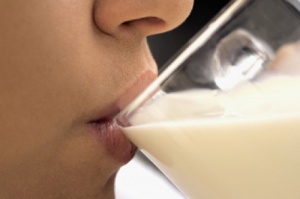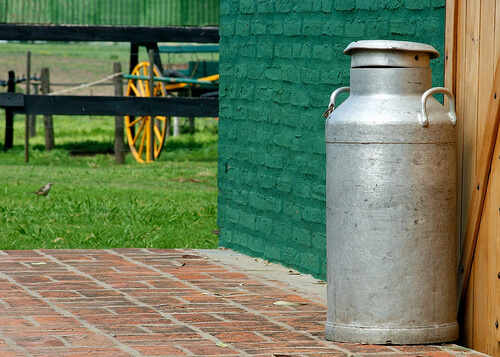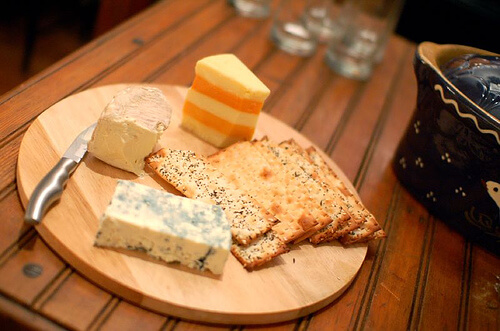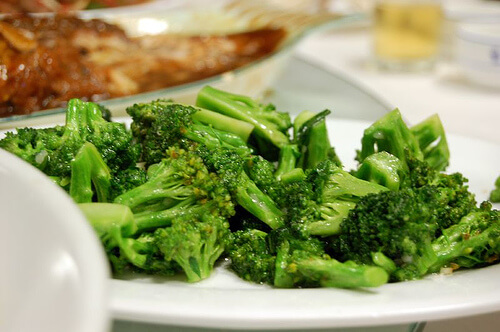Does Drinking Dairy Products Prevent Osteoporosis?

A lot of people think that dairy products prevent osteoporosis, and that we should drink more milk, due to its calcium content which will protect our bones.
If that’s the case, then why is it that in many cultures that don’t drink milk nor its derivatives, rates of osteoporosis are in fact much lower than in ours? This makes us want to evaluate if this relationship is truly correct.
Do dairy products prevent osteoporosis?
There are some reasons why milk and dairy products have always been recommended for bone health and to prevent osteoporosis. This is because of the large amount of calcium it gives you, 120 mg for every 100 g. Also, the lactose (the sugar present in milk) improves its absorption into the body.
In addition to this, it’s a natural and readily available food, even though the quality of milk sold these days is lower than that of a few decades ago.
Read more: Everything You Need to Know About Lactose Intolerance
What are the disadvantages?
So, do dairy products prevent osteoporosis? Despite the great advantage of the calcium, the truth is that there are three big disadvantages.
- The first is that calcium absorption is not as high as you would think. This is due to the other components in milk such as its proteins, tricalcium, and the calcium/phosphorus ratio.
- In addition to this, these proteins also acidify the blood. This acidification demineralizes your bones, because in order to balance and make your body more alkaline, it has to use a part of these minerals.
- There are many people who experience different levels of lactose intolerance without knowing it. This intolerance damages your intestinal health, irritating them and worsening the absorption of nutrients.
All in all, the calcium that we mentioned as a main advantage is not correctly absorbed by your body. That is why we find high rates of osteoporosis in people that have consumed dairy products their whole lives.
That’s the reason why we suggest looking for other sources of calcium that are more easily digestible and for foods that have other minerals that contribute to proper assimilation and calcium attachment.
Alternative sources of calcium
- Sesame: This contains more calcium than milk and is much more digestible. You can eat it raw, or as gomashio (ground and toasted with salt), with oil, or in the form of tahini (a sesame paste). You can also blend tahini with water, lemon, cinnamon, and honey to make your own sesame drink.
- Cooked carrots: They are much richer in calcium than when they are raw.
- Seaweed: High in calcium and in many other minerals. You can use them to cook stews and season sauces and salads. We suggest spirulina algae because of its many properties.
- Leafy green vegetables, especially broccoli.
- Maca: This contains a lot of calcium and iron and is also a great hormonal regulator. People with erratic hypertension or with an overactive immune system should be careful.
- Cinnamon mixture: Very rich in calcium, but you should eat it in small quantities and combined with infusions, or vegetable and fruit drinks, so that it doesn’t cause acidification.
- Horsetail: We aren’t suggesting this medicinal plant for its calcium content but rather because it is very rich in silicon, which helps you assimilate calcium better. You can consume two or three cups a day.
- Salt water: A natural and balanced supplement that contains all of the minerals you need in appropriate proportions. You can find it in herbal and dietary stores. We recommend drinking a spoonful before each meal.
See also: Learn About The Amazing Effects of Horsetail
What foods take away calcium?
As important as it is to eat sources of calcium, it’s also important to avoid the foods that take it away. See below for examples of these:
- White sugar
- Refined or table salt
- Bottled drinks
- Meat
- Coffee and black tea
- Alcoholic beverages
All cited sources were thoroughly reviewed by our team to ensure their quality, reliability, currency, and validity. The bibliography of this article was considered reliable and of academic or scientific accuracy.
- Elena Fernández; Fernández José Alfredo; Martínez Hernández Venancio (2015). Documento de Consenso: importancia nutricional y metabólica de la leche (España). http://scielo.isciii.es/pdf/nh/v31n1/09revision09.pdf
- Rosa Leticia Segura Medina; Enrique Tavera Mejía (2016). Más de 30 razones para tomar leche y consumir productos lácteos (México). http://sialaleche.org/wp-content/uploads/2017/10/Gaceta-leche.pdf
- Ernesto Mota-Blancas; Eduardo Perales-Caldera (2012). Los mecanismos de absorción de calcio y los
modificadores de absorción con base para la elaboración de una dieta de bajo costo para pacientes osteoporóticas (México). https://www.anmm.org.mx/bgmm/1864_2007/1999-135-3-291-304.pdf - Organización de las Naciones Unidas para la alimentación y la agricultura. (2011). Leche y productos lácteos. Codex Alimentarius. https://doi.org/10.4067/S0718-07642015000500010
- ANMAT. (2014). Alimentos Lácteos. Código Alimentario Argentino. https://doi.org/10.1016/j.wasman.2005.11.024
- Weaver, C. M. (2003). Calcio. In Conocimientos Actuales sobre Nutrición.
This text is provided for informational purposes only and does not replace consultation with a professional. If in doubt, consult your specialist.











